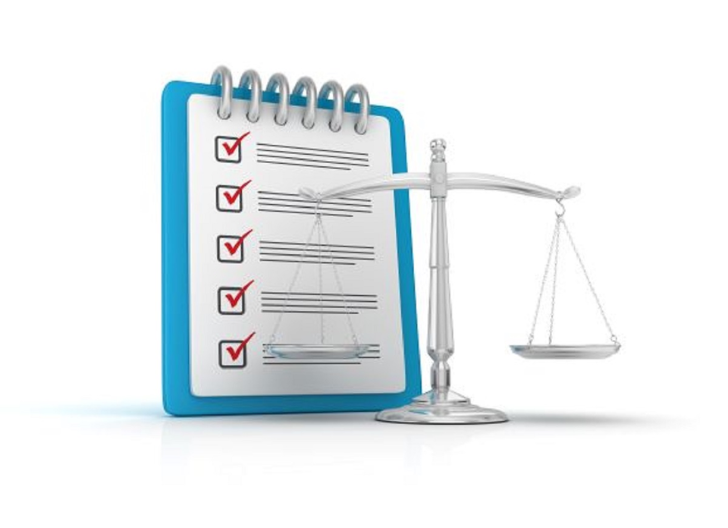The Case for Checklists
Matthew G. Finley

This guest post was authored by Matthew G. Finley, a trial attorney at The Law Office of Steven Barnette.
I hope the attorney reading this has too much to do. That means you’ve successfully built up a sustainable caseload. But a heavy workload is a double-edged sword. How can it all be done, efficiently, consistently, and with client goals in mind? When I was young, my father’s boss used to say, “How can you say there’s not enough time? You have all the time in the day; you have 24 hours.” I appreciate the attitude, but I would like to propose something else that can achieve results and maintain your sanity; that proposal is a system of checklists.
The Power of a Checklist
On January 15, 2009, US Airways Flight 1549 took off from La Guardia Airport with 155 passengers, struck a flock of Canadian geese, lost both engines, and crash landed in the Hudson River.1 This flight was piloted by Chesley B. “Sully” Sullenberger, who was credited with pulling off one of the most successful crash landings in history. While Sullenberger was hailed as modest, he made the point over and over that it was a crew effort.
Many may not know that the collision took place ninety seconds after takeoff and was at an altitude of three thousand feet, just to place the speed of this incident in context. The two engines shut off as three geese got sucked into the turbines. Sullenberger took over the controls and because the plane had too little speed to make it to any runway, he decided to land it in the Hudson.
At that point the copilot pulled out a checklist to restart an engine. He ran the checklist for both engines and did it so fast, it was difficult to replicate in simulations after the fact. From there, the two went through the ditching checklist and were able to crash land the plane. They then switched to the evacuation checklist, saving every single person on board.
The remarkable part of this story is the role that checklists, of which the Airbus A320 has an incredible amount, played in saving those individuals. Considering the fact that every human being’s attention to detail has its limits, one must wonder if the individuals on this plane could have accomplished what they did without the checklists.
Obviously, the practice of law is a bit less dramatic than a plane crash, even if some days it feels like a slow disaster, but there is a lesson to be learned from Airways Flight 1549. Every single takeoff, flight, and landing are consistent because of these lists. Every response to a situation is consistent because of these lists. And every aspect of flying a plane is efficient because of these lists. If these are the goals we wish to accomplish in our own profession, then why can’t we create the same?
Checklists in your Own Practice
I will attempt to explain how I have incorporated the above lessons in my own practice with the caveat that we likely do not practice the same types of law or practice in the same manner. Feel free to amend the things I say to fit your style.
In each type of case, have your checklists handy so you can run through each “phase” of a case: intake, planning, negotiation, filing, discovery, mediation, trial/hearing, closing. These are the phases I use for a divorce case. Within each of these phases are several checklists, so I contemplate the same issues every time. The issues are not always applicable but the fact they are on the list ensures I think about their applicability in any given situation.
For instance, in an intake checklist I ensure I have the intake form with information always relevant (name, spouse’s name, contact info, children, dates of birth, etc.), retainer agreement, any deposit needed, letters of representation, and client packet. On its face this can seem simple, but in terms of consistency it is important. Let’s assume you have four intakes in the same week, pair that with court appearances, the fact you may have cases in different areas of law, other divorces in different phases, and your personal life, and this type of run-through essentially shifts the burden of retaining information from you to the checklist.
In terms of when to check your lists, I set up reminders on my calendar every two weeks to go through a certain checklist (two weeks is tight but I like to move cases toward resolution and this keeps me moving). In this way I am never far behind where I need to be if I am behind at all. I can move these reminders if I am waiting on something from the client, defense counsel, or the court.
Further, you can extend this system into all areas of your practice: employment decisions, reception, mail, faxes, setting hearings, depositions, or trial.2 Your system can be as strict or as loose as you want depending on your style. The books I have cited below take a strong view of systems and if you have a case management system that allows you to use checklist templates this can be powerful. My system is a bit less intense as I use a binder for each type of phase or situation. It may be “low tech”, but it works for me.
A quick note is appropriate comparing aviation checklists to law firm checklists. Aviation checklists must serve a secondary purpose to information recall, and that is speed. Plane crashes happen fast and every second is as important as the next. To that end, a cockpit checklist is broken down into many different situations—they are simple, fast, and bold. As your checklists do not necessarily need to accomplish that purpose, they can contain a bit more information, notes, and thoughts. My experience has taught me that different professions need different systems, although Atul Gawande, cited earlier, may disagree.
Conclusion
The bottom line: if you are attempting to keep track of everything you need to do by reactively listing items when you think of them, you will break, either because you have forgotten something or because reacting to stimuli is no way to live your life. Checklists and a systematic means of prepping up your cases will take stress off of you, maintain quality, and allow you to actively make decisions about the best path for your cases. Your clients will thank you and you will thank yourself for the gift of no longer needing to crash land a plane with just your wits and luck.
I wish you luck in your own practices.

Matthew G. Finley is a trial attorney at The Law Office of Steven Barnette in Newport News, Virginia. He practices personal injury, worker’s compensation, and criminal defense. He can be reached at mfinley@valawoffice.com
--
1 While this is a true description, I must give credit to a book that helped inspire this article and brought this story to my attention. Atul Gawande, The Checklist Manifesto, Metropolitan Books, 1st Ed., 2009. Gawande is a surgeon and led the World Health Organization’s effort to reduce surgical deaths. Seriously, go read it..
2 A wonderful author and individual with whom I have tried to stay in contact is John Fisher who runs a medical malpractice firm in New York. He has written two books regarding systems and personal injury firms. The Power of a System, Advantage Media Group, 2014. The Law Firm of Your Dreams, Advantage Media Group, 2020.
This post was written by a guest blogger. Although this article was thoroughly reviewed by NBI staff, the views, opinions and positions expressed within the post are those of the author alone and do not represent those of NBI. The accuracy, completeness and validity of any statements made within the post are not guaranteed. We accept no liability for any errors, omissions or representations.
